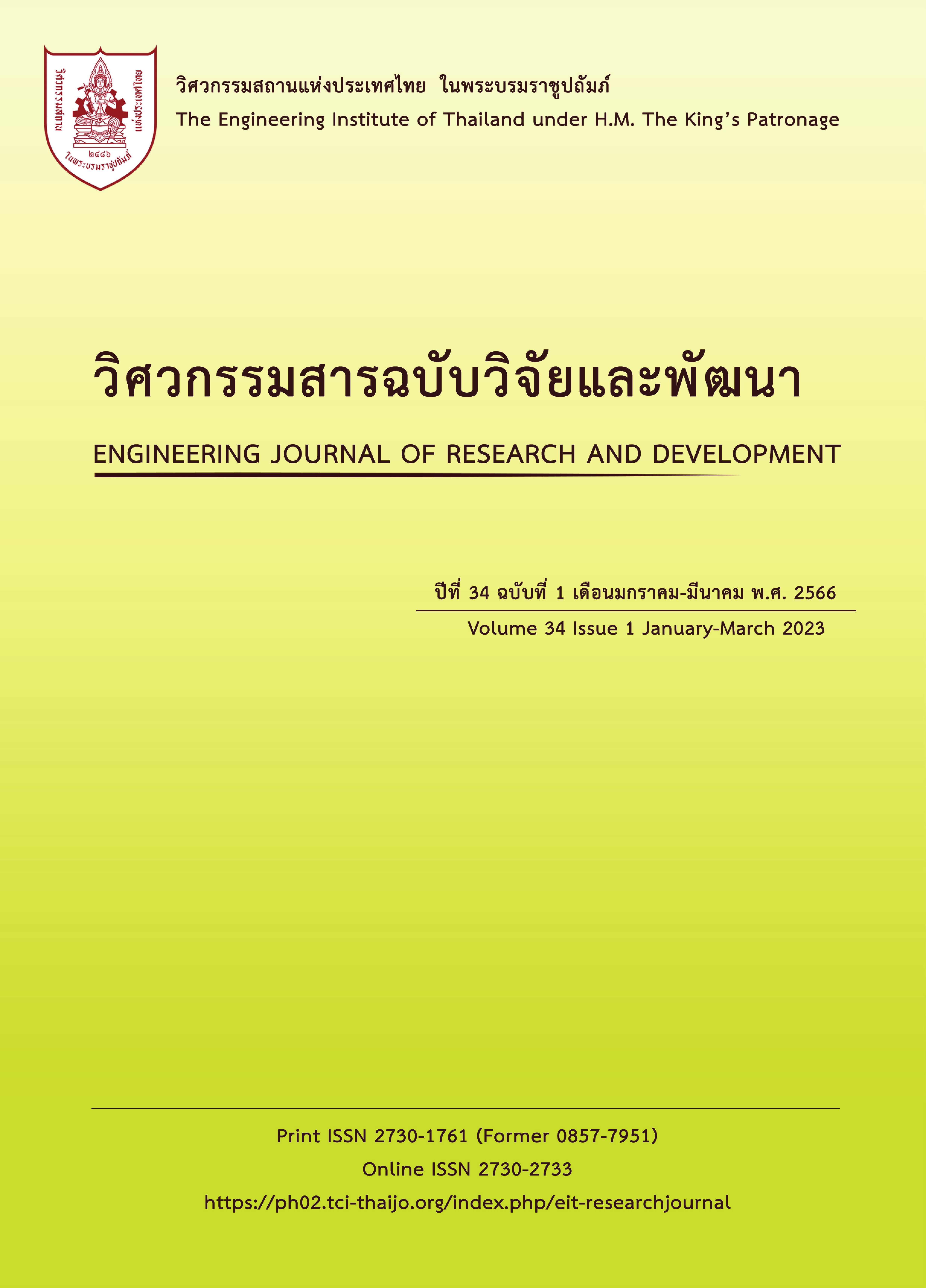EVALUATION OF DAILY AND MONTHLY STREAMFLOW SIMULATION BY SWAT MODEL IN THE KHLONG SUAN MAK WATERSHED
Main Article Content
Abstract
Presently, hydrological models have been accepted tools for assessing hydrological conditions at watershed levels. However, these models have some limitations. Thus, an application of the models needs to understand them and know their limitations that may be occurred in studies. The objective of this study is to evaluate daily and monthly streamflow data simulated using the SWAT model in the Khlong Suan Mak watershed. The sensitivity analysis of model parameters was also conducted using SWAT-CUP. The simulated results were compared to the observed streamflow between 2010 and 2017 at the Ban Mai station (P.26A). The results show that 13 and 10 parameters had significant influences on daily and monthly streamflow simulations, respectively, because their P-values were lower than 0.05. Moreover, SWAT simulated streamflow was acceptable. Daily and monthly simulations were categorized as satisfactory (R2, NSE, and PBIAS of 0.56, 0.56, and 5.13%, respectively) and good (R2, NSE, and PBIAS of 0.72, 0.72, and 5.90%), respectively. The results of this study were expected to be useful information for the application of a model as an effective tool in water resources management in the Khlong Suan Mak watershed in the future.
Article Details

This work is licensed under a Creative Commons Attribution-NonCommercial-NoDerivatives 4.0 International License.
The published articles are copyright of the Engineering Journal of Research and Development, The Engineering Institute of Thailand Under H.M. The King's Patronage (EIT).
References
Terrier, M. et al. Streamflow naturalization methods: a review. Hydrological Sciences Journal, 2021, 66 (1), pp. 12-36. DOI: 10.1080/02626667.2020.1839080.
Me, W. et al. Effects of hydrologic conditions on SWAT model performance and parameter sensitivity for a small, mixed land use catchment in New Zealand. Hydrology and Earth System Sciences, 2015, 19, pp. 4127-4147. DOI: 10.5194/hess-19-4127-2015.
Arnold, J. G. et al. Large area hydrologic modeling and assessment part I: model development. Journal of the American Water Resources Association, 1998, 34 (1), 73-89. DOI: 10.1111/j.1752-1688.1998.tb05961.x.
Phiri, W. K. et al. A pseudo-reservoir concept in SWAT model for the simulation of an alluvial floodplain in a complex tropical river system. Journal of Hydrology: Regional Studies, 2021, 33 (2021) 100770, pp. 1-18. DOI: 10.1016/j.ejrh.2020.100770.
Abbaspour, K. C. et al. A continental-scale hydrology and water quality model for Europe: calibration and uncertainty of a high-resolution large-scale SWAT model. Journal of Hydrology, 2015, 524, pp. 733-752, DOI: 10.1016/j.jhydrol.2015.03.027.
Tobin, K. J. and Bennett M. Improving SWAT model calibration using soil merge (SMERGE). Water, 2020, 12 (2039), pp. 1-21. DOI: 10.3390/w12072039.
Ruthamnong, S. Geomatics for analysis of flood and drought risk areas in Klong Suan Mak Basin, Kamphaeng Phet Province. The Golden Teak: Humanity and Social Science Journal, 2017, 23 (2), pp. 86-103.
Lohpaisankrit, W. and Prasanchum, H. Catchment-scale flood hazard mapping in the lower areas of Lam Pao River basin, Thailand. Engineering Access, 2021, 8 (1), pp. 53-60. DOI: 10.14456/mijet.2022.7.
Neitsch, S.L. et al. Soil and water assessment tool: theoretical documentation, Texas: Texas A&M University, 2009.
Rostamian, R. et al. Application of a SWAT model for estimating runoff and sediment in two mountainous basins in central Iran. Hydrological Sciences Journal, 2008, 53 (3), pp. 977-988. DOI: 10.1623/hysj.53.5.977.
Moriasi, D. N. et al. Hydrologic and water quality models: performance measures and evaluation criteria. Transaction of the American Society of Agricultural and Biological Engineers, 2015, 58 (6), pp. 1763-1785. DOI: 10.13031/trans.58.10715.


